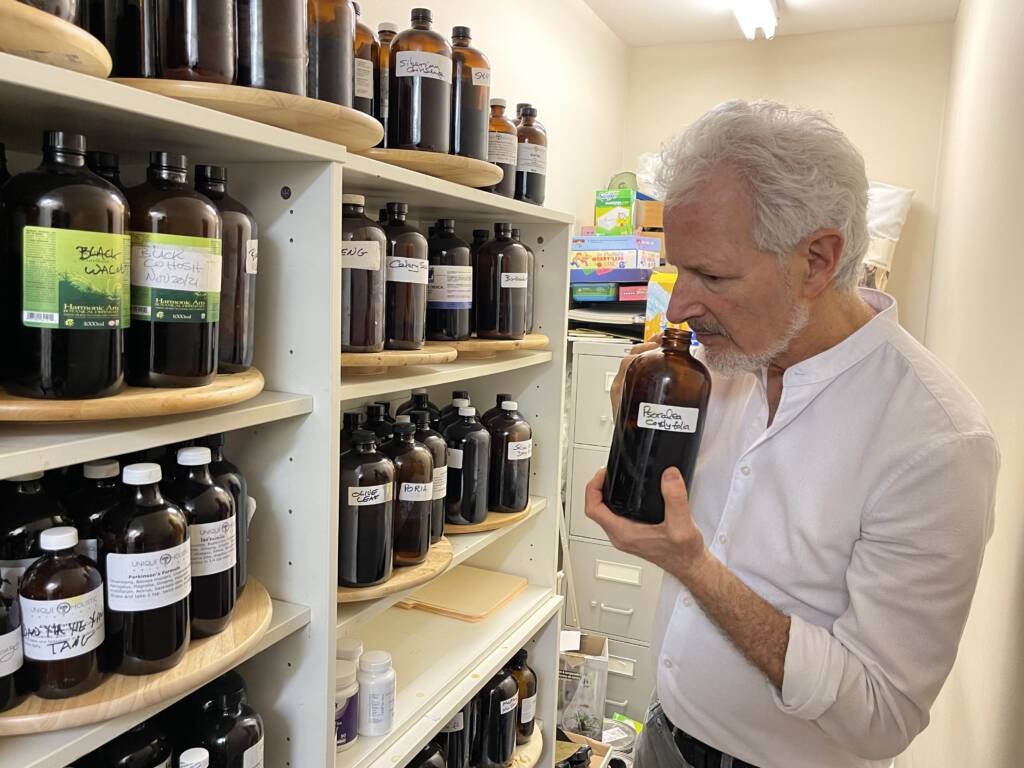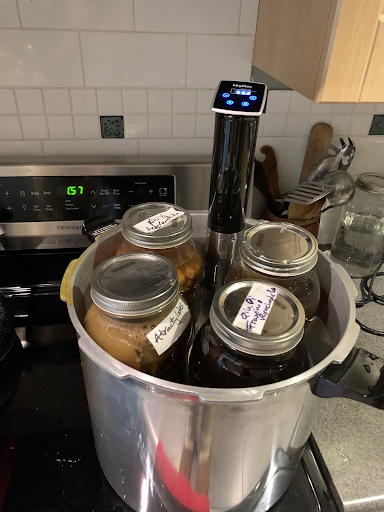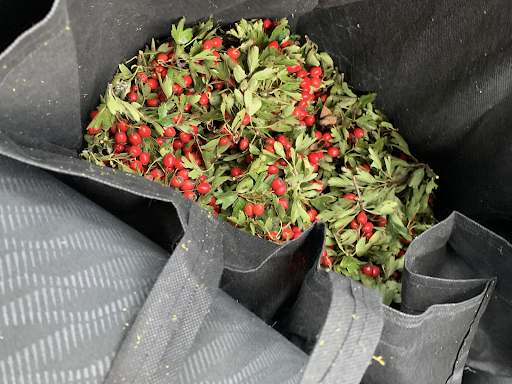Creating quality herbal extracts for botanical medicine:
My Ongoing Adventures in Botanical Medicine

I wrote a blog post a while back about my explorations in making quality herbal extracts. I wrote that post almost sixteen months ago, and so much has evolved in that time. I’m now extracting very close to one hundred sixty herbs. OK, so it might have gotten a little out of hand, but it’s also been an engaging and rewarding process. I’d like to share with you how I’ve been approaching the process of making herbal extracts.
My inspiration begins when a herb comes up in my research. I do most of my research at pubmed.gov, the public medical research database. Sometimes when I research a specific herb I find that it is often used in conjunction with a different herb. So I will often chase down that herb’s historic usage. I then surf back to pubmed.gov to investigate its scientifically researched values.
Botanical Methodology:
Many herbalists simply follow the classic production method.
- Filling the jar to half with the plant material
- Adding the defined amount of alcohol and water
- Putting it on the shelf for a few weeks to a few months
I have found the dual extraction approach to be far more effective in herbal extracts for botanical medicine. I spend a lot of time going through the research literature. This helps me to find the most suitable extraction parameters. In published research articles, the method of extraction for experimental purposes. Sometimes, that is the very focus of research.
There are a range of technologies for herbal extraction in botanical medicine, such as:
- Ultrasonic devices
- Microwave
- Centrifugal
- Soxhlet, which is a kind of percolation apparatus
Many research articles describe the most effective ratios. There is the plant material to fluid ratio, and best water to methanol ratio. Then of course there is an optimal temperature, length of time, and even the most desirable pH level. This is information I have found invaluable. I do not, so far, apply any of the advanced technologies of extraction. I focus on the dual method of heat and time with ethanol, water, controlled pH and temperature. I then write a summary of the herbs classical usage, and any scientific findings. This results in the best approach to extraction for each plant. Once the herb is extracted, I print the summary and tape it to the office stock bottle for ready reference.
Extraction starts with the Sous Vide

A Sous Vide is a culinary device used in a pot or large receptacle, which heats and circulates water. I place glass containers inside the receptacle, filled with my source material. The Sous Vide keeps the temperature as specified over a designated period of time. This allows me to walk away from an extraction rather than watching over it to prevent it from becoming too hot. Often I will simply heat for a period with water, while other times I add vinegar or baking soda to lower or raise the pH. I do this at a temperature below boiling, often between 80-90 degrees Celsius. I then add the alcohol, mix it and cook it below the boiling point of alcohol which is a bit over 78 degrees Celsius. Then it goes on the shelf for two to six weeks or more. That said, some herbs, such as berberine rich plants, would rather be at room temperature. Others such as leafy herbs, get hot water poured over them as you would with tea. After it has cooled, I add the alcohol to draw out the alcohol soluble elements. Then to the shelf for regular shaking and time to mellow. This process diffuses its secrets into the liquid. At this point the herbal extracts are ready for use in botanical medicine.
Researching traditional herbal usages

It has been engrossing to gain knowledge of what was traditionally known about a native herb from a specific region of the world. Robust herbal medicinal traditions exist in Indian, Chinese, African, South East Asian cultures. This is particularly the case within the regional context of Chinese and Indian herbs. In these cultures, herbs become prescribed within very structured and evolved treatment parameters. Modern research has added much new knowledge of these herbs. We know much more about a herbs safety, it’s bioactive elements, and any chemical impacts in the body. This informs us on any proven effective use towards a patients health conditions.
Many of the plants, have roughly 60 – 200 bioactive elements. If one is to carefully blend between 4 -10 herbs, you can imagine the depth of potential values. Herbs, in many ways, are true supplements. Botanical herbs have co-evolved with humanity over great spans of time. Medicinal plants and foods play across our biochemistry like a piano. These “notes” provide deep, effective support for many fundamental elements of our health. The research stands on the deep foundation of tradition. Few health conditions would not improve with the intelligent utilization of botanical medicines

Hawthorne berry is very abundant locally. I picked this in late September and bottled six litres. Both the leaves and berries are valuable.
